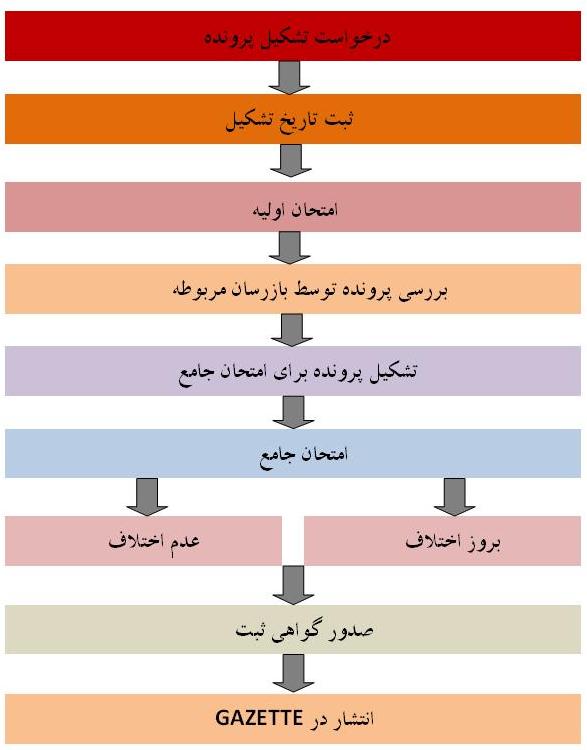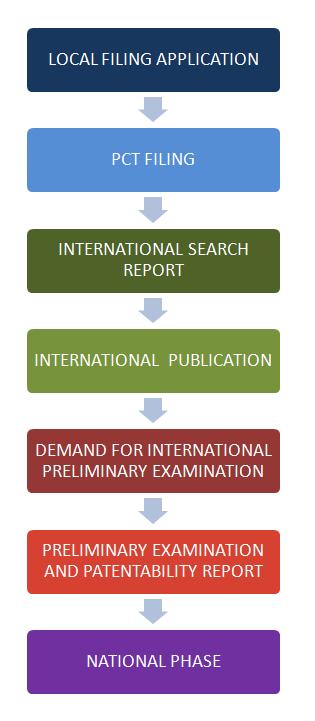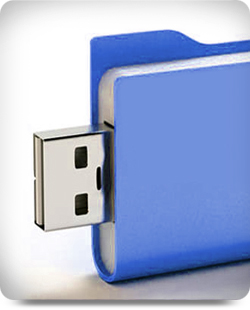
اختراع ثبت شده |
|
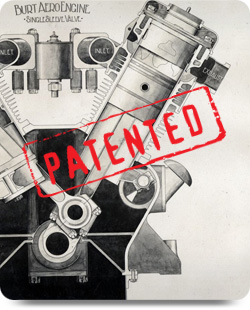 |
ثبت اختراع جدید به مالک آن این حق را میدهد تا از استفاده، ساخت، فروش و یا بهره برداری از آن توسط سایرین برای مدت زمان مندرج در گواهی ثبت جلوگیری کند وکلای با تجربه ما از مراحل ابتدایی تا ثبت نهایی اختراع شما در سطح جهانی ، شما را راهنمایی و همراهی خواهند نمود |
International Patent |
|
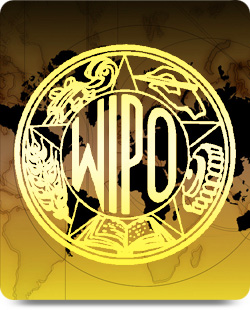 |
What Is Patent Cooperation Treaty (PCT)?The PCT is an international treaty, administered by the World Intellectual Property Organization (WIPO), between more than 125 Paris Convention countries. The PCT makes it possible to seek patent protection for an invention simultaneously in each of a large number of countries by filing a single "international" patent application instead of filing several separate national or regional patent applications. The granting of patents remains under the control of the national or regional patent Offices in what is called the "national phase". Briefly, an outline of the PCT procedure includes the following steps:
Flow Chart of Patent Application via PCT
I Have An Invention. How Can I Protect It In Several Countries?You have a few options.
What Is The Effect Of An International Patent Application?In general terms, your international patent application, provided that it complies with the minimum requirements for obtaining an international filing date, has the effect of a national patent application (and certain regional patent applications) in all PCT Contracting States. An international patent application must be prepared in accordance with certain formal requirements set out in the Treaty and Regulations, which have become international standards effective in all of the PCT Contracting States. Who Has The Right To File An International Patent Application Under The Pct?You are entitled to file an international patent application if you are a national or resident of one of the PCT Contracting States. If there are several applicants named in the international application, only one of them needs to comply with this requirement. How Long Does The PCT Process Take?You have 18 months from the time you file your international patent application (or 30 months from the filing date of the initial patent application of which you claim priority) before you have to begin the national phase procedures with individual patent Offices. It is important to note, however, that you don't have to wait for the expiration of 30 months from the earliest filing date of your patent application ("priority date") before you enter the national phase- you can always request an early entry into the national phase. In the national phase, each patent Office is responsible for examining your application in accordance with national or regional patent laws, regulations and practices resulting in, if all things are favorable, the grant of a patent. Can Priority Of An Earlier Patent Application Be Claimed?Generally, patent applicants who wish to protect their invention in more than one country first file a national or regional patent application with their national or regional patent Office, and within 12 months from the filing date of that first application (a time limit set in the Paris Convention for the Protection of Industrial Property), they file their international application under the PCT. Thus, in an international patent application, you may claim the priority, under the Paris Convention of one or more earlier patent applications for the same invention, whether they were national, regional or international applications, for up to 12 months after the filing of the earliest of those applications. If you do not claim priority of an earlier application, the priority date for the purposes of the PCT procedure will be the international filing date of the international application. What Is A PCT International Search?A PCT international search is a high quality search of the relevant patent documents and other technical literature in those languages in which most patent applications are filed (that is, English, French and German, and in certain cases, Chinese, Japanese, Russian and Spanish, and from April 1, 2007, Korean). The high quality of the search is assured by the standards prescribed in the PCT for the documentation to be consulted (see PCT Rule 34), and by the qualified staff and uniform search methods of the ISAs, which are all experienced patent Offices. The international search is carried out in accordance with the International Search and Preliminary Examination Guidelines and results in an international search report and a written opinion of the ISA on the potential patentability of your invention. Who Will Carry Out The International Search Of My Pct Application?For Malaysian PCT Applicant, they can choose either the Australia, Europe Patent Office or South Korea Patent Office to become their International Search Authority for the international search. What Is An International Search Report?The international search report consists mainly of a listing of references to published patent documents and technical journal articles which might affect the patentability of the invention claimed in the international application. The report contains indications for each of the documents listed as to their possible relevance to the critical patentability questions of novelty and inventive step (non-obviousness). Together with the search report, the ISA prepares a written opinion on patentability, which will give you a detailed analysis of the potential patentability of your invention. The international search report and the written opinion are to be communicated by the ISA to you by the fourth or fifth month after the filing of the international patent application. What Is The Value Of The International Search Report?The report enables you to evaluate your chances of obtaining patents in PCT Contracting States. An international search report which is favorable, that is, in which the documents cited would appear not to prevent the grant of a patent, assists you in the further processing of your application in those countries in which you wish to obtain protection. If a search report is unfavorable (for example, if it lists documents which challenge the novelty and/or inventive step of your invention), you have the opportunity to amend the claims in your international patent application (to better distinguish your invention from those documents), and have them published, or to withdraw the application before it is published. The high quality of the international search assures you that any patent granted from an international application is less likely to be successfully challenged, and thus provides valuable input in support of investment decisions. What Is The Written Opinion Of The International Searching Authority?For every international application filed on or after 1 January 2004, the ISA will establish, at the same time that it establishes the international search report, a written opinion which is a preliminary and non-binding opinion on whether the invention appears to meet the patentability criteria in light of the search report results. That opinion is sent to you and to WIPO together with the international search report. The written opinion helps you understand and interpret the results of the search report with specific reference to the text of your international application, being of special help to you where you want to evaluate your chances of obtaining a patent without incurring the additional cost of international preliminary examination. The content of the ISAR will also be very useful for patent Offices in deciding whether or not to grant the patent, especially for those Offices which do not carry out significant substantive examination. This report is made available to the public once 30 months from the priority date have expired. What Is International Publication Under The PCT Consist Of?WIPO publishes the international application shortly after the expiration of 18 months from the priority date (if it has not been withdrawn earlier), together with the international search report. You receive a copy of the published international application, and each PCT Contracting State receives a copy of all published international applications. In addition, WIPO publishes the weekly PCT Gazette which contains basic data about the international applications published that week in a uniform and abbreviated format. What Is International Preliminary Examination?International preliminary examination is a second evaluation of the potential patentability of the invention, using the same standards on which the written opinion of the ISA was based. If you wish to make amendments to your international application in order to overcome documents identified in the search report and conclusions made in the written opinion of the ISA, international preliminary examination provides the only possibility to actively participate in the examination process and potentially influence the findings of the examiner before entering the national phase-you can submit amendments and arguments, and are entitled to an interview with the examiner. At the end of the procedure, an international preliminary report on patentability (IPRP Chapter II) will be issued. The International Preliminary Examining Authorities (IPEAs) which carry out the international preliminary examination are the International Searching Authorities mentioned above. What Is The Value Of The International Preliminary Report On Patentability(Chapter Ii)?The IPRP (Chapter II) which is provided to you, with copies also being sent to WIPO and by WIPO on to the patent Offices of the Contracting States which request it, consists of an opinion on the compliance with the international patentability criteria of each of the claims which have been searched. It provides you with an even stronger basis on which to evaluate your chances of obtaining patents, and, if the report is favorable, a stronger basis on which to continue with your application before the national and regional patent Offices. The decision on the granting of a patent remains the responsibility of each of the national or regional Offices in which you enter the national phase; the international preliminary examination report should be considered by the Offices but is not binding on them. What Are The Advantages Of The Patent Cooperation Treaty?The procedure under the PCT has great advantages for you as an applicant, for the patent Offices and for the general public:
|
Area of Expertise |
|
 |
Our patent team members are experienced in all aspects of patent law and are knowledgeable in the following technical arts: |
|
|||||||||||
| ©Copyright TRADEMARK2U SDN BHD Legal Notice | |
Terms of Use
The Terms and Conditions below govern the use of our website (www.trademark2u.my). By using our website, you accept these terms in full. If you disagree with any part of our Terms and Conditions, please do not access or use our website. These terms may be changed by TRADEMARK2U SDN BHD at any time without notice.
Terms and Conditions
The materials provided on this website are for general information purposes only. The information constitutes general facts regarding intellectual property law and our firm. They do not constitute legal advice or other professional advice and do not necessarily represent the opinions of TRADEMARK2U SDN BHD or its clients. While we endeavour to keep the information up to date and correct, we make no representations or warranties of any kind, express or implied, about the completeness, accuracy, reliability, suitability or availability with respect to the website or the information, products, services, or related graphics contained on the website for any purpose.
If you require legal advice, you should retain competent legal counsel to advise you. If you would like to retain TRADEMARK2U SDN BHD, please contact one of our associates, who will be happy to discuss whether our firm can assist you. Please note that in no event will we be liable for any loss or damage including without limitation, indirect or consequential loss or damage, or any loss or damage whatsoever arising from loss of data or profits arising out of, or in connection with, the use of this website.
Through this website you are able to link to other websites which are not under the control of TRADEMARK2U SDN BHD. We have no control over the nature, content and availability of those sites. The inclusion of any links does not necessarily imply a recommendation or endorse the views expressed within them.
While we endeavour to keep the website up and running smoothly, we make no representations or warranties of any kind, express or implied, about the completeness, accuracy, reliability, suitability or availability with respect to the website or the information; products, services, or related graphics contained on the website for any purpose; that the site will be available without interruption, error or omission; that defects will be corrected; or that the website and the server(s) that make it available are free from viruses or harmful components. Any reliance you place on such information and on our website is therefore strictly at your own risk.
Liability
TRADEMARK2U SDN BHD and its associates will have no liability for any damage arising from the misuse of any information provided on this website. The information provided on the website is not legal advice and should not be relied upon and as such, doing so without seeking the advice of legal counsel constitutes a misuse of the information.
TRADEMARK2U SDN BHD does not guarantee the confidentiality of any communications sent via e-mail or through its website.
Copyright
The copyright in this website and all materials contained in it is owned, or licensed by TRADEMARK2U SDN BHD. This website, as a whole, or in part, may not be reproduced without expressed prior written consent of TRADEMARK2U SDN BHD. To obtain such consent, please contact us at legal@trademark2u.my.
Feedback
We welcome your feedback. If you have questions or comments about our website, please contact us at legal@trademark2u.my.
